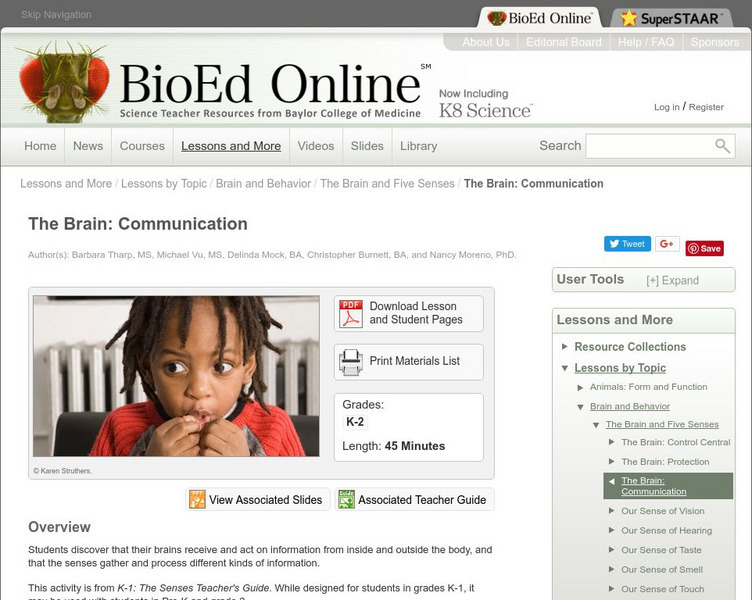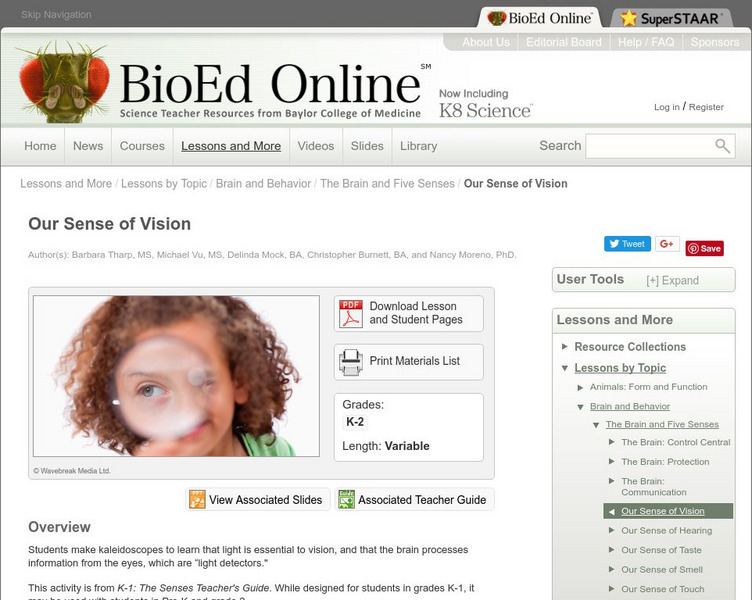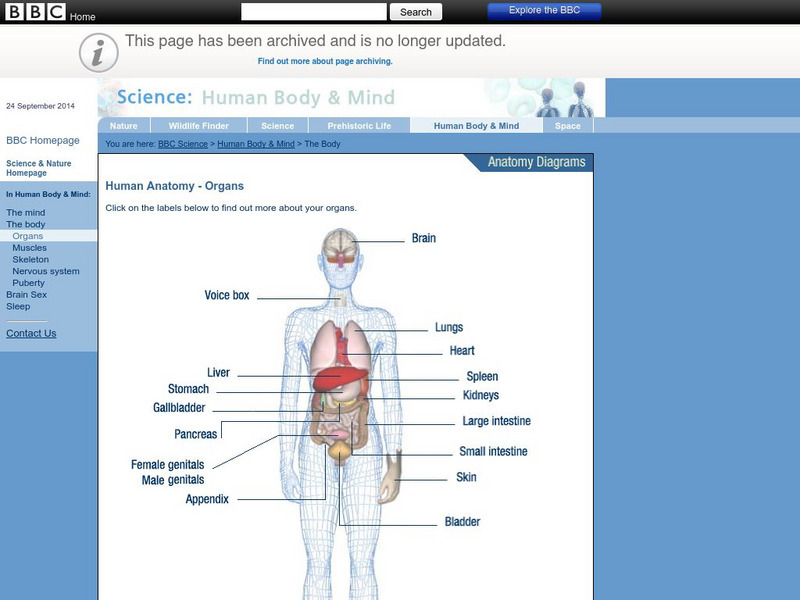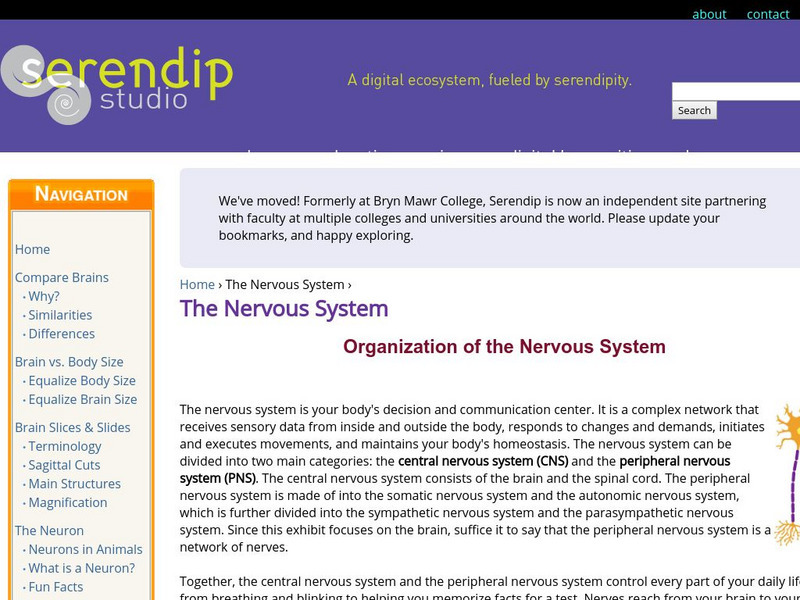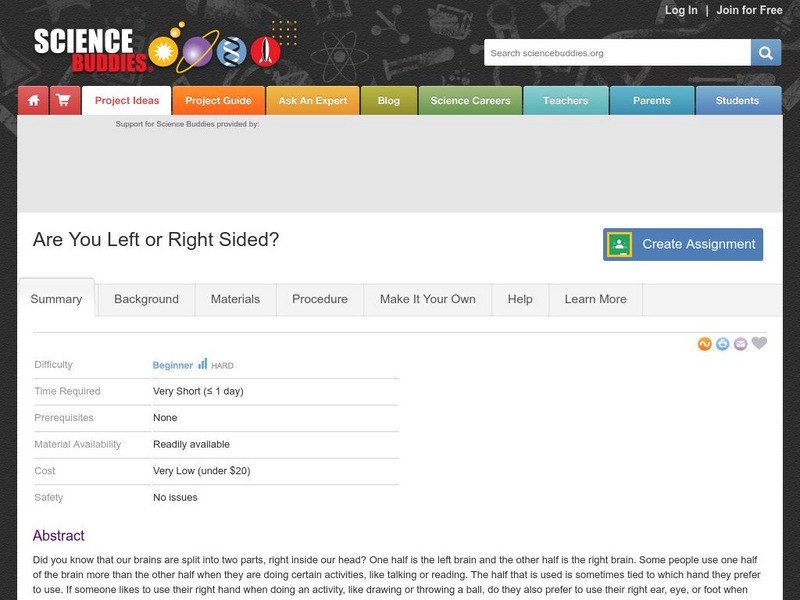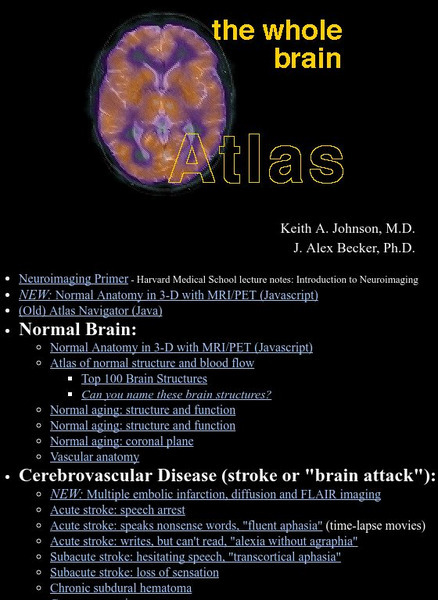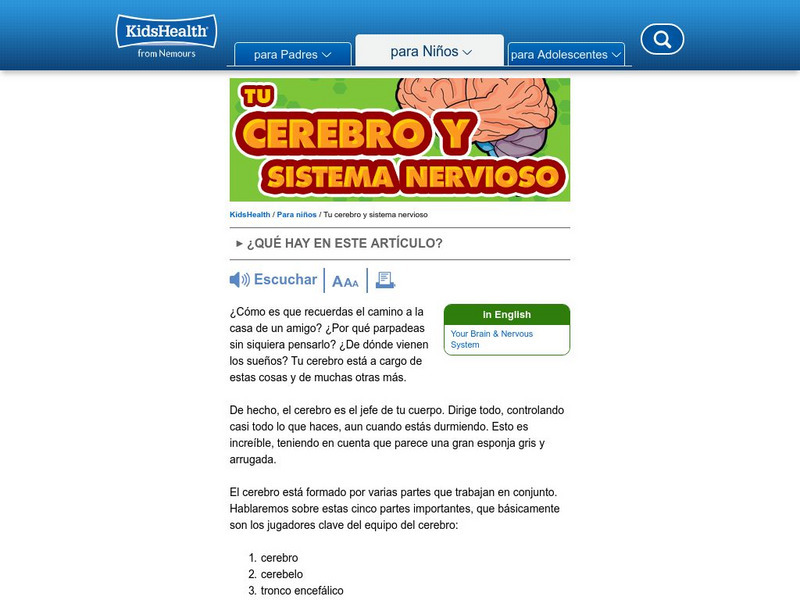Hi, what do you want to do?
Other
Dana Sourcebook of Brain Science: It's Mindboggling!
Look through this online pamphlet to find brain exercises as well as explanations of how the brain works. Very complete and fun to read.
Science Buddies
Science Buddies: The Nose Knows Smell but How About Taste?
As if sniffles and clogged sinuses are bad enough, everything seems to taste bland and flavorless when we are sick. Gather up a few volunteers, hit the kitchen, and try this experiment to find out if there is really truth to the idea...
Curated OER
Kids Health: Let's Hear It for the Ear!
Use this site to learn about the body part that is responsible for collecting sounds, processing them and sending them to your brain. See all the inner workings of the ear through great diagrams. Available in Spanish.
Other
Kipling Chiropractic Centre: Interactive Tour of Your Spine
The brain uses the spinal cord to communicate with every part of your body. However, when that communication is interrupted, health problems can occur. Click on each vertebrae to discover how subluxation of each bone will adversely...
PBS
Pbs: Brain Geography
Become a brain geographer and learn the parts of your brain. This web site creates an interactive way to explore the center of our thoughts. Just click on each part to learn more.
Fun Brain
Fun Brain: Grammar Gorillas
Click on the noun or verb in each sentence and check out your score! With definitions of parts of sentences for reference. With a link to other fun games for students.
Other
Coalition for Juvenile Justice: Implications of Adolescent Brain Dev't [Pdf]
The first in a two-part presentation of research findings with potential to inform and improve juvenile justice and delinquency prevention policy and practice.
BioEd Online
Bio Ed Online: The Brain: Communication
How does information from different parts of the body reach the brain? In this lesson students discover that their brains receive and act on information from inside and outside the body, and that the senses gather and process different...
PBS
Pbs Learning Media: The Zombie Autopsies: The Neuroanatomy of a Zombie
For this lesson, students look at the brain of a zombie, and in the process learn about the characteristics of a healthy brain. They take part in a Neurotransmitter Dance Party to learn how neurons communicate. Includes downloadable...
BioEd Online
Bio Ed Online: Our Sense of Vision
Which parts of the body are involved in vision (seeing)? Is light important for vision? In this lesson students make kaleidoscopes to learn that light is essential to vision, and that the brain processes information from the eyes, which...
Rice University
Rice University: Web Adventures: Reconstructors: A Plaguing Problem
Online adventure game consisting of five consecutive episodes where you become a member of a team of scientists who investigate pain relieving drugs to see if they are safe. Episodes should be played in order; however, they can be...
BBC
Bbc: Human Anatomy: Organs
Explore the anatomy of the human body. Click on an organ or other body part to read more about its structure and function, and then try out an interactive activity for that organ.
TeachEngineering
Teach Engineering: Hearing: How Do Our Ears Work?
Students learn about the anatomy of the ear and how the ears work as a sound sensor. Ear anatomy parts and structures are explained in detail, as well as how sound is transmitted mechanically and then electrically through them to the...
Bryn Mawr College
Serendip: The Nervous System
Learn about the main sections of the human brain, and how the structure or each relates to its function.
Khan Academy
Khan Academy: Connect: The Growth Mindset
An important part of growing your brain is understanding common obstacles that can get in your way or throw you off track when learning and how to overcome them. There are 3 parts to this LearnStorm growth mindset activity.
TED Talks
Ted: Ted Ed: How to Visualize One Part Per Million
Parts per million is a scientific unit of measurement that counts the number of units of one substance per one million units of another. But because it's hard to conceptualize really large numbers, it can be difficult to wrap our brains...
The Tech Interactive
Tech Museum of Innovation: How We See
Part of a larger sight on the eyeball and its function, this section describes the process of sight and ranges in topics from the chemical reaction of light hitting the retina to blind spots and animals seeing color.
Children's Museum
Dinosphere: Dino Profiles: Meet the Gorgosaur
What do fossils tell us about the Gorgosaurus and how it compares to T. rex? Learn about the size and diet of this "fearsome lizard", and read about the various injuries of Dinosphere's Gorgosaur fossil. Also, "Gorgosaur 360" lets you...
Science Buddies
Science Buddies: Are You Left or Right Sided?
Our brains are split into two parts, right inside our head. One half is the left brain and the other half is the right brain. Each side of your brain controls different parts of your body and most people are more dominant controlling one...
National Geographic
National Geographic: Seeing Is Believing
In this lesson, students investigate the properties of light using simple materials. Includes handout and video resources.
Harvard University
Harvard Medicine: The Whole Brain
Detailed color images of the human brain, both normal and with various brain diseases, including Alzheimer's, Huntington's, multiple sclerosis, stroke, and AIDS dementia.
Other
Waiting: About Brain Injury: A Guide to Brain Anatomy
This website by Attorney Gordon S. Johnson, Jr. provides a video [2:49] "Brain Anatomy Begins with the Skull", descriptions of the parts of the brain, diagrams, and links to a variety of resources about brain functions and brain injury.
CPALMS
Florida State University Cpalms: Florida Students: Brain Basics
The brain isn't just one big blob sitting in the head, it's actually divided into many distinct parts. Know the names of the major regions of the brain and identify them on a diagram.
Curated OER
Kids Health: Tu Cerebro Y Sistema Nervioso
Learn how important is your brain and about the different parts of the brain. In Spanish.











